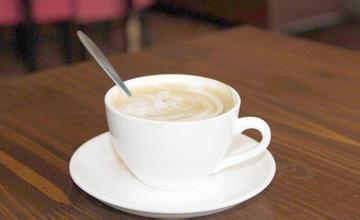Introduction to the varieties of Brazilian Coffee Bean Flavor description and Taste treatment method
Introduction to the varieties of Brazilian Coffee Bean Flavor description and Taste treatment method
The great economic crisis that broke out in 1929 sharply reduced the world consumption of coffee, which dealt a heavy blow to the Brazilian coffee plantation economy. Since then, the proportion of Brazilian coffee production in export earnings has plummeted. In the past 30 years, with the rise and development of Brazilian modern industry, especially steel, shipbuilding, automobile, aircraft manufacturing and other industries, the status of coffee in the national economy has declined year by year, but it is still one of the pillars of Brazil's economy. Brazil is still the largest coffee producer and exporter in the world. Brazil makes full use of the tropical geographical environment and attaches importance to the production and sale of coffee, so that the output, export volume and per capita consumption of coffee have been ranked first in the world for many years. It is known as the "coffee kingdom". Coffee was introduced into Brazil after the 18th century. In 1727, coffee was introduced into Port Belem, Brazil from Guyana. Since then, it has settled in Antuku, Brazil, mainly in the southeast coastal areas of Brazil. Namely, Sao Paulo, Parana, San Esprito, Minas Gerais and other four states. From the end of the 18th century to the 1920s, during the heyday of Brazilian coffee production, Brazil accounted for 75% of the world's total coffee production. Over a long period of time, coffee accounted for 2% of Brazil's total export revenue, thus making Brazil a well-deserved "coffee kingdom".
Inside the seed coat are two coffee seeds wrapped in translucent silver skins. The vigorous production period of a coffee tree usually lasts about 15 years. Of course, some trees are still fruitful for 20 or 30 years. As soon as the coffee tree loses its ability to bear fruit, it will be cut down on the spot and uprooted so as not to compete for nutrients with other trees that are still strong and can bear fruit. Coffee yield is related to the species and growing environment of coffee trees. On average, a coffee tree can produce 5 pounds of coffee fruit a year, and eventually harvest about 1 pound of dried coffee beans.
Coffee trees are usually bred in nurseries, grow into seedlings, and then moved to coffee plantations a year later, in full compliance with the original Arab method of planting and cultivating coffee trees. In the first four or five years of its growth, the coffee tree will continue to take root downward, develop its trunk upward, and develop into an umbrella shape so that it can bear rich fruit in the future.
Before long, small fruits appear in piles, first green, then yellow, then red or crimson, and can be picked almost black. In Jamaica, bats are the first to know whether the fruit is ripe or not. They suck coffee pulp at night.

Important Notice :
前街咖啡 FrontStreet Coffee has moved to new addredd:
FrontStreet Coffee Address: 315,Donghua East Road,GuangZhou
Tel:020 38364473
- Prev

Description of characteristics and Flavor of Yejiaxuefei Coffee introduction to the producing areas of varieties by taste treatment
Yega Xuefei Coffee is divided into two categories according to the different ways of handling raw coffee beans: category An is washed, and the grade standard is set by the American Fine Coffee Association SCAA, with GR-1;GR-2, the smaller the Arabic numeral, the higher the grade, the G1 Yega Chefe style is distinct, and the flavor of citrus and floral aroma in the coffee liquid is
- Next

Flavor description of Yejia Coffee beans introduction of Variety treatment Manor in Taste producing area
The flavor description of Yejia coffee beans the variety treatment method in the producing area is fresh and bright, which is easy to be accepted by the Chinese, on the contrary, the acceptance of mellow bitterness is low, but it is not wrong to be bright, so we should pay attention to the adjustment of baking degree, at least baking it. We can accept light roasting, but coffee with a fresh and bright sour flavor, even at a roasting temperature.
Related
- Detailed explanation of Jadeite planting Land in Panamanian Jadeite Manor introduction to the grading system of Jadeite competitive bidding, Red bid, Green bid and Rose Summer
- Story of Coffee planting in Brenka region of Costa Rica Stonehenge Manor anaerobic heavy honey treatment of flavor mouth
- What's on the barrel of Blue Mountain Coffee beans?
- Can American coffee also pull flowers? How to use hot American style to pull out a good-looking pattern?
- Can you make a cold extract with coffee beans? What is the right proportion for cold-extracted coffee formula?
- Indonesian PWN Gold Mandrine Coffee Origin Features Flavor How to Chong? Mandolin coffee is American.
- A brief introduction to the flavor characteristics of Brazilian yellow bourbon coffee beans
- What is the effect of different water quality on the flavor of cold-extracted coffee? What kind of water is best for brewing coffee?
- Why do you think of Rose Summer whenever you mention Panamanian coffee?
- Introduction to the characteristics of authentic blue mountain coffee bean producing areas? What is the CIB Coffee Authority in Jamaica?

